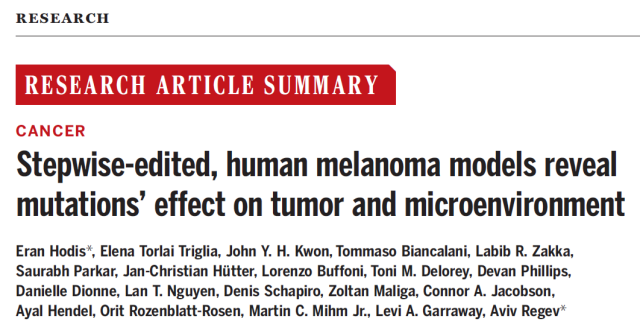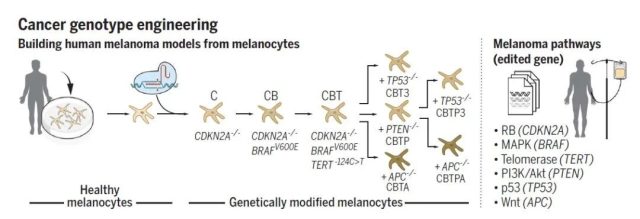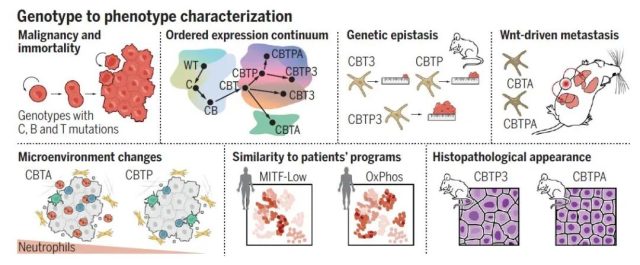How many steps does it take to turn normal cells into cancer cells?
- A Single US$2.15-Million Injection to Block 90% of Cancer Cell Formation
- WIV: Prevention of New Disease X and Investigation of the Origin of COVID-19
- Why Botulinum Toxin Reigns as One of the Deadliest Poisons?
- FDA Approves Pfizer’s One-Time Gene Therapy for Hemophilia B: $3.5 Million per Dose
- Aspirin: Study Finds Greater Benefits for These Colorectal Cancer Patients
- Cancer Can Occur Without Genetic Mutations?
How many steps does it take to turn normal cells into cancer cells?
- Red Yeast Rice Scare Grips Japan: Over 114 Hospitalized and 5 Deaths
- Long COVID Brain Fog: Blood-Brain Barrier Damage and Persistent Inflammation
- FDA has mandated a top-level black box warning for all marketed CAR-T therapies
- Can people with high blood pressure eat peanuts?
- What is the difference between dopamine and dobutamine?
- How long can the patient live after heart stent surgery?
Science: How many steps does it take to turn normal cells into cancer cells?
Scientists have identified thousands of genetic mutations in cancer over the past two decades, but understanding how these genetic mutations affect tumor growth and spread in the body remains challenging because each patient’s tumor can have many different Gene mutation.
This has led to the inference of genotype and phenotype linkages from cancer patients, and being able to systematically link genetic mutations or combinations of mutations in cancer to their phenotypes would greatly advance our understanding of cancer pathogenesis and help develop corresponding treatments and medicines.
On April 29, 2022, Aviv Regev et al . published a research paper titled: Stepwise-edited, human melanoma models reveal mutations’ effect on tumor and microenvironment in the journal Science .
The research team used CRISPR-Cas9 gene editing technology to sequentially edit five melanoma-related gene mutations or a combination in healthy human skin melanocytes.
These edited cells grew and proliferated into tumors with melanoma characteristics, including rapid growth, Increased invasive capacity, as well as specific gene activation and pigmentation patterns.
Because the study can introduce mutations one at a time, the specific effects of specific genetic mutations and combinations of mutations can be determined. The study not only uncovered key genetic mutations in melanoma, but also suggests a new way to study the role of specific genes in cancer .

The study’s lead author, Eran Hodis , began the research as a PhD student in the lab of Aviv Regev , now a resident at Harvard’s Brigham and Women’s Hospital, and Aviv Regev joined Genentech in 2020 as a research and early-stage resident Executive Vice President of Development.
According to Eran Hodis , the study is the first to use precisely controlled genetic engineering techniques to create a human cancer model starting from fully differentiated cells rather than stem cells .
This approach will open up opportunities to create similar models in many other cancers, helping to accelerate the study of the association of cancer genetics with specific disease characteristics.
In order to design these cancer models, precise gene editing techniques must be combined with high-resolution, massively parallel single-cell genomics analysis to generate and characterize cells and tumors, and to Machine learning to analyze data.
Taken together, these findings give us an unprecedented understanding of which genetic mutations, and combinations thereof, cause cells to become cancerous.
 Aviv Regev
Aviv Regev
When studying melanoma, linking its genotype to a specific trait or phenotype is particularly difficult. This is because melanoma, as a skin cancer, exposes the skin to many external factors, such as UV rays.
Therefore, there are many gene mutations caused by external factors in melanoma patients, and most of these gene mutations are not driving factors of melanoma.
By introducing gene mutations into healthy human melanocytes, the effect of gene mutations on melanoma can be observed without interference.
The research team first used CRISPR-Cas9 gene editing to sequentially introduce mutations in CDKN2A , BRAF and TERT genes commonly found in melanoma in healthy human melanocytes . Together, these three gene mutations cause cells to behave like cancer cells and divide indefinitely.
Next, the research team knocked out the known melanoma-related tumor suppressor genes PTEN, TP53 and APC in the above-mentioned cells respectively, generating a total of 9 different cell models:
- Wild-type human melanocytes (WT) ,
- CDKN2A -/- cells (C) ,
- CDKN2A -/- + BRAF V600E cells (CB) ,
- CDKN2A -/- + BRAF V600E + TERT -124C>T cells (CBT) ,
- CDKN2A -/- + BRAF V600E + TERT -124C>T + TP53 -/- cells (CBT3) ,
- CDKN2A -/- + BRAF V600E + TERT -124C>T + PTEN -/- cells (CBTP) ,
- CDKN2A -/- + BRAF V600E + TERT -124C>T + APC -/- cells (CBTA) ,
- CDKN2A -/- + BRAF V600E + TERT -124C>T + PTEN -/- + TP53 -/ – cells (CBTP3) ,
- CDKN2A -/- + BRAF V600E + TERT -124C>T + PTEN -/- + APC -/- cells (CBTPA) .

Then, the research team implanted the above-mentioned nine cell models into mice and observed them.
Single-cell RNA sequencing showed that these cells gradually changed their gene expression programs as more genetic mutations were introduced, and that mouse tumor models had similar gene expression patterns and pigmentation patterns to human melanoma patients with the same genotype.
This shows that the de novo melanoma cells faithfully mirror the tumors seen in human melanoma patients .
A striking feature of melanoma is that it starts to metastasize at an early stage of the cancer, and this study clearly shows that CBTA cells and CBTPA cells are the most metastatic cells, that is, cells with APC gene knockout are the most metastatic type, suggesting that our APC gene inactivation may contribute to the metastasis of melanoma .
The study also showed that,CDKN2A -/- + BRAF V600E + TERT -124C>T mutations, when present together, cause cells to behave like cancer cells and divide indefinitely.
The tumors grew fastest when the three mutations described above, plus inactivation of the PTEN and TP53 genes .

In general, this study uses CRISPR-Cas9 gene editing technology to edit human healthy melanocytes, gradually introducing 1 to 5 gene mutations, involving 6 common gene mutations in melanoma, namely CDKN2A, BRAF, TERT, PTEN, TP53, APC. A total of 9 genetically different cell models were constructed.
These models were then characterized in vitro and in vivo using physiological assessment, histopathology, single-cell RNA sequencing, and machine learning algorithms.
Through these cellular models, melanocyte genotypes were linked to phenotypes such as gene expression programs, replication and immortality, malignancy, rapid growth, pigmentation patterns, tumor metastasis, and histopathological features. and identified genetic mutations that cause melanoma tumor growth, metastasis, and changes in the tumor microenvironment.
What’s more, the study not only revealed key genetic mutations in melanoma, but also suggested a new way to study the role of specific genes in cancer .
Reference:
https://www.science.org/doi/10.1126/science.abi8175
How many steps does it take to turn normal cells into cancer cells?
(source:internet, reference only)
Disclaimer of medicaltrend.org
Important Note: The information provided is for informational purposes only and should not be considered as medical advice.



